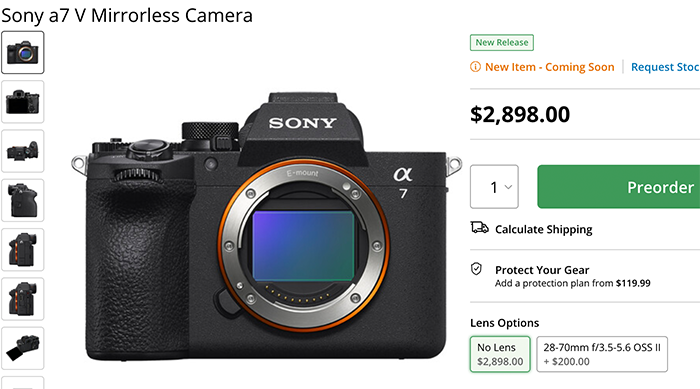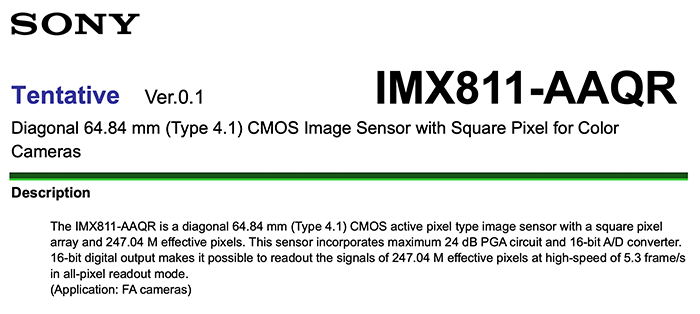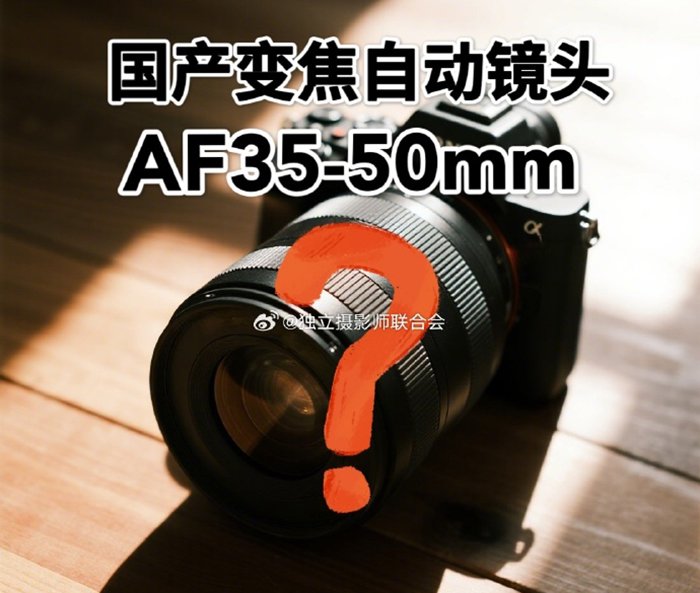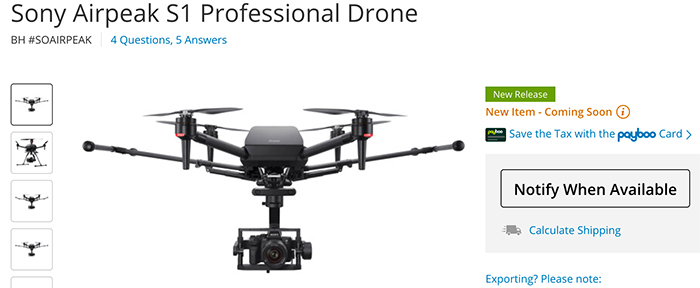SAN DIEGO, CA – June 9, 2021 – Sony Electronics Inc. today announced their first-ever professional drone, the “Airpeak S1”[i]. An introductory model in the new Airpeak line, the S1 is the world’s smallest[ii] drone that can be equipped with a full-size mirrorless interchangeable-lens Alpha camera, opening up a new world of creative possibilities.\
The new drone utilizes a proprietary motor, propeller, control system and sensing technology, allowing it to fly at extremely high speeds with very stable wind resistance. Additionally, the Airpeak S1 features an advanced remote controller that can support the production of high-quality aerial images and freely control the aircraft. It also includes obstacle detection, automatic flight control via sensing and increased safety via cloud management of the aircraft and flight information.
“Sony is excited to launch our new drone business with the Airpeak S1,” said Yang Cheng, Vice President, Imaging Solutions, Sony Electronics Inc. “Combining an extremely compact size with some of Sony’s most advanced imaging, sensing, AI and robotics technologies, the S1 will allow content creators, storytellers and commercial professionals to capture that which they’ve never been able to capture before.”
Aircraft with Advanced Flight Performance
The new Airpeak S1 offers dynamic flying capabilities, including a maximum speed of 55mph (90km/h)[iii], a maximum angular velocity of 180°/s[iv], and a maximum tilt angle of 55°[v].
Propulsion technology using a combination of Sony developed key devices provides wind resistance in strong wind speeds up to 44.7mph[vi] (20m/s). An example can be viewed HERE.
Independently developed propulsion device and flight control system
In addition to the lightweight, highly efficient, sturdy and responsive proprietary 17″ propeller and brushless motor, the Airpeak S1 is equipped with an ESC (Electric Speed Controller) for optimal control of these components. A unique, high-performance flight control system integrates the propulsion device and all sensor information to ensure stable flight and high maneuverability.
Stable Flight by Sensing
Stereo cameras equipped with Sony’s image sensors are installed in 5 locations (front, back, left, right, bottom) of the aircraft. Sony’s Vision Sensing Processor, which processes camera data at high speed and with low power consumption, and proprietary algorithms are used to accurately estimate the aircraft’s spatial position and orientation in real time, enabling stable flight even in environments where GNSS (Global Navigation Satellite System) reception may be hindered, such as indoors or under bridges. The Airpeak S1 is also equipped with a unique high-performance flight control system that integrates all sensor information such as IMU (Inertial Measurement Unit), direction, barometric pressure and infrared ranging to optimize the propulsion device.
The Airpeak S1 uses Multi-directional sensors to enable its obstacle braking function. The front, rear, left and right stereo cameras and the infrared range-finding sensor mounted on the top recognize obstacles in the vicinity of the aircraft, allowing the aircraft to automatically decelerate and stop according to the behavior of the aircraft and the surrounding conditions.
Multiple Camera and Lens Variations
Users have the flexibility to choose the right Alpha system for their desired application to expand their filmmaking horizons. The Airpeak S1 is compatible with a wide range of camera bodies including: the Alpha 7S series and FX3 for high descriptive capability with suppressed noise, the Alpha 7R series for ultra-high definition, and the Alpha 9 series and others for distortion-free images. The Alpha 1, which can shoot footage in 8K, is also compatible.
Free Operability
The new professional drone includes “Airpeak Flight,” an iOS® and iPadOS® compatible application[vii] that integrates the aircraft, transmitter, camera, and gimbal, allowing the operator to monitor status information such as flight distance and remaining battery power, and change various operations and settings on the screen.
Airpeak S1 also includes a dual operation mode so that one user can operate the drone, while another user can operate the gimbal and camera simultaneously, all while checking the same image, even in complicated scenes. The FPV (First Person View) camera, which can be tilt-operated from the remote controller, is mounted on the nose of the aircraft and is useful for the operator to check the direction of the aircraft and the direction of travel.
Highly Efficient Workflow with Automatic Flight
The new drone includes “Airpeak Base,” a web application that allows the operator to manage equipment, create flight plans, and manage flight logs. In the equipment management, information on the equipment used is automatically listed and managed based on the flight log. This allows the operator to check the condition of the aircraft before going to the field, minimizing on-set issues.
With Airpeak Base, the operator can create advanced flight plans and automatically fly the aircraft along the same course repeatedly, as if the drone were on rails installed in the air. It is able to set the position (latitude, longitude and altitude) and speed of the aircraft along the timeline, and specify the orientation of the gimbal and the timing of video or still image shooting. It can also draw smooth curves on the map. Reproduction flight is an automatic flight function that reproduces the flight route, gimbal, and camera movements based on the flight logs that have flown in the past.
All aircraft information, including logs, can be uploaded to the cloud via the mobile app Airpeak Flight. Airpeak Base allows users to check the status of the aircraft and can provide notifications if necessary. Users can manage the status of all managed aircraft in one place before flight. Past flight logs can be viewed on the logbook screen, and details such as in-flight errors can also be reviewed.
Related Services
“Airpeak Plus,” a cloud service that allows users to use the rich features of Airpeak Base, and “Airpeak Protect Plan,” a service plan to cover accidental damage to the product, will be available to customers. Further details regarding both services will be available on the Airpeak website before the related products and services go on sale
Pricing and Availability
The new Airpeak S1 suggested retail price is approximately $9,000.00 and will ship with two (2) pairs of propellers, a remote controller, two (2) batteries and a battery charger. A third-party gimbal made specifically for the Airpeak S1 will be sold separately. The Airpeak S1 will be available for pre-order and ship to customers in the fall of 2021. Airpeak S1 is made in Japan.
For more information, please visit: https://electronics.sony.com/airpeak
Sony Group will be exhibiting Airpeak S1 at Japan Drone 2021, a drone exhibition to be held at Makuhari Messe in Chiba, Japan from June 14-16, 2021. In addition, Izumi Kawanishi, Senior Vice President, AI Robotics Business, Sony Group Corp. will provide the keynote speech in the morning of June 14, 2021.
https://ssl.japan-drone.com/en_la/
With this Airpeak news, Sony Group Corporation expands the possibilities for professional creators, enables unprecedented visual expression and drives a sense of Kando. In addition to empowering video creators, Sony will promote co-creation activities for industry professionals[viii] in a wide range of fields such as system integrators and industrial partners to explore the benefits of drones uses.
Exclusive stories and exciting new content shot with the new Airpeak S1 and Sony’s other imaging products can be found at www.alphauniverse.com and www.sonycine.com, sites created to educate and inspire fans and customers of Sony α – Alpha brand and Sony’s Cinema Line.
Airpeak is a trademark of Sony Group Corporation.
Notes:
[i] Operating a drone in the USA is regulated by federal law and regulations. State and local ordinances may also apply to certain operations. When operating a drone, it is the remote pilot’s responsibility to always comply with applicable laws and regulations.
[ii] Based on Sony research and testing.
[iii] No payload, and obstacle brake disabled.
[iv] Vision positioning disabled.
[v] Obstacle brake disabled.
[vi] No payload.
[vii] All apps require network services, content, and operating system and software subject to terms and conditions and may be changed, interrupted or discontinued at any time and may require fees, registration and credit card information.
[viii] Those who use drones to provide products and services to customers. If you register as a professional supporter, you will receive emails about events sponsored by Sony, opportunities to experience aircraft flight, and the latest product information.








